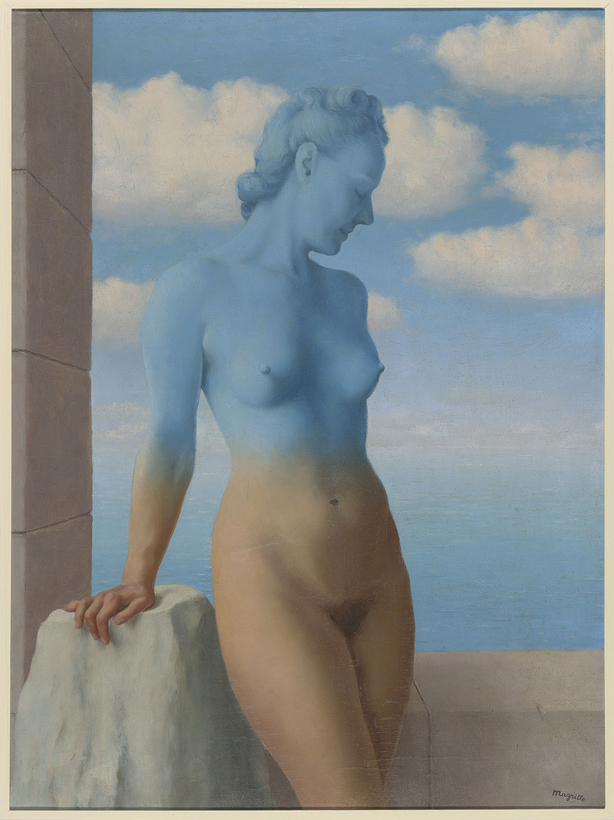The Venice Biennale officially opens today, a sensory overload of art that will twist your mind and reshape your thoughts.
During last week’s previews, the atmosphere crackled with anticipation, an excitement that was not just about the art but also the social scene, which has come roaring back after a coronavirus-induced hiatus. Each of the 81 national pavilions (and the galleries and foundations as well) gave a dinner or cocktail party. During the Biennale’s celebratory opening days, the chosen few will gather to the tune of prosecco corks softly popping in picturesque gardens and ancient palazzos.

The curator for the 59th Biennale is Cecilia Alemanni. She has brought together more than 200 artists from 58 countries in a show dedicated to imagination and its relationship to metamorphosis, technology, and the earth. Her theme, “The Milk of Dreams,” is derived from a book of fantastical stories that the 20th-century Surrealist painter Leonora Carrington wrote and illustrated for her children.

At the Peggy Guggenheim Collection, the exhibition “Surrealism and Magic: Enchanted Modernity” digs deeper, exploring Carrington’s theme in otherworldly works by Georgio de Chirico, Max Ernst, and Carrington herself. The Fondazione Prada, meanwhile, approaches the theme of dreams more literally with “Human Brains: It Begins with an Idea,” a show curated by the Science Council and located in the Ca’ Corner della Regina, a resplendent white palazzo on the Grand Canal.
A solo exhibition of work by the British-Indian sculptor Anish Kapoor extends from the Gallerie dell’Accademia into the artist’s recently acquired Palazzo Manfrin. And the billionaire owner of Christie’s, François Pinault, fresh from the triumphant refurbishment of Paris’s Bourse de Commerce—it now houses his art, one of the largest private collections in the world—is showing Marlene Dumas and Bruce Nauman at the Palazzo Grassi.

At the Espace Louis Vuitton Venezia you’ll find the vibrant, large-scale work of the German artist Katharina Grosse. And Chanel is celebrating the 10 winners of its first Chanel Next Prize, which was judged by a panel that included the actress Tilda Swinton and the architect David Adjaye.
At the Ducal palace: Anselm Kiefer. He was invited by the Fondazione Musei Civici di Venezia to respond to the Sala dello Scrutinio, one of the palace’s most ornate halls—a space where public elections, including the election of the doge, were once held. His site-specific paintings are magnificent.

Another must-see is an exhibition of Stanley Whitney’s work at the Palazzo Tiepolo Passi. In the early 1990s, Whitney worked in Rome, and since then he has also created paintings at his studio in Parma. “Stanley Whitney: The Italian Paintings” explores the ways Italian art and architecture have influenced this American artist.
The Victor Pinchuk Foundation has made a last-minute change to its scheduled exhibition of the Future Generation Art Prize and is now focusing on the war in its home country. The new show “This Is Ukraine: Defending Freedom” pairs art created since Putin’s invasion with works by JR, Marina Abramović, and others.

“Raqib Shaw,” presenting a new body of work by the Indian-born, London-based artist, is on at the Ca’ Pesaro, a 17th-century palazzo that houses Venice’s International Gallery of Modern Art. In the same building, but almost diametrically opposed in terms of style and form, is a small but exquisite exhibition of work by Bice Lazzari, an abstract and minimalist painter born in Venice in 1900.
“Paula Rego: Secrets of Faith,” on show at the Victoria Miro gallery, depicts episodes from the life of the Virgin Mary that resonate powerfully in this city of churches.

And “Mary Weatherford: The Flaying of Marsyas,” at the Museo di Palazzo Grimani, takes inspiration from Titian’s masterpiece of the same name.
Then there is the painter of the moment, Flora Yukhnovich, whose love affair with the rococo is the subject of “Fragonard to Tiepolo: A Rococo Journey with Flora Yukhnovich.” This show takes the form of a guided virtual-reality tour of Venice, and was produced by Vortic. For a step back into reality (of sorts), pop inside the Chiesa di Santa Maria della Visitazione to see the magnificent Tiepolo ceiling in its full grandeur.
If at any time you feel in danger of mental overload as the past, present, and future collide chaotically in your mind, go straight to Harry’s Bar, smile sweetly, and say the name of the only artist that really matters in Venice: Bellini. —Sarah Hyde
The 59th Venice Biennale opens today and is on through November 27
Sarah Hyde is a London-based writer

 Discover
Discover